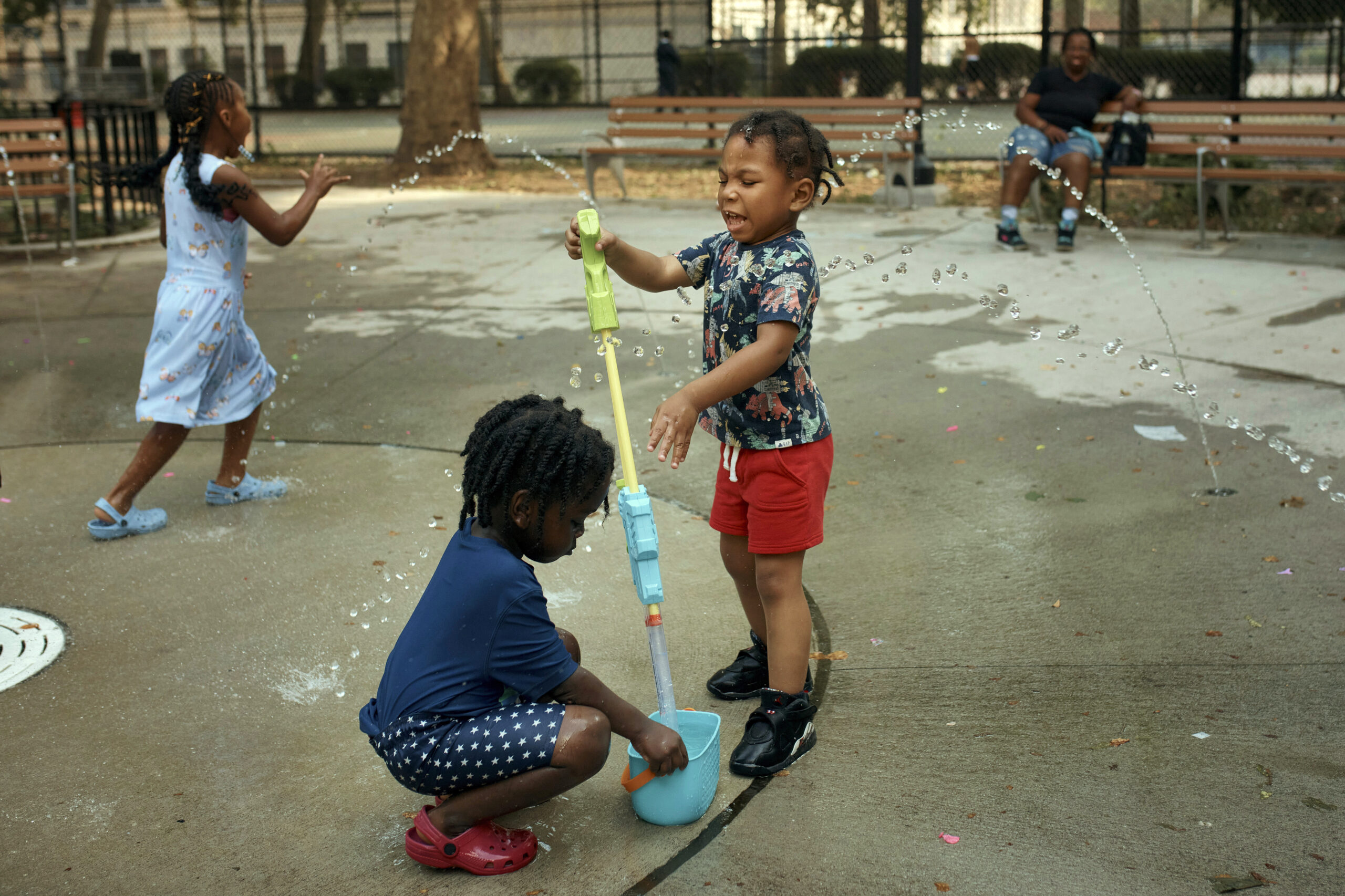Children play in a water park on a hot day, Friday, June 21, 2024, in the Bronx. AP Photo/Andres Kudacki
Ruben Berrios knows the scorching truth: When it comes to extreme heat, where you live can be a matter of life and death.
The 66-year-old lives in Mott Haven, a low-income neighborhood in New York’s South Bronx, where more than 90 percent of residents are Latino or Black. Every summer, the South Bronx becomes one of the hottest parts of the city, with temperatures 8 degrees (4.5 degrees Celsius) higher than on the Upper West and East sides — lusher, majority-white neighborhoods less than a mile away.
The heat isn’t just uncomfortable. It’s the top cause of weather-related fatalities nationwide, quietly killing an average of 350 New Yorkers each year, according to a city mortality report. As he took a break from his pool game at an apartment complex and older adult community center that serves as a designated cooling space, Berrios recalled a recent heat wave: “I lost two persons. They were close to me.”
Tens of millions of Americans are facing major heat waves, with temperatures consistently exceeding 90 degrees (32 degrees Celsius). But in big cities, the heat hits hardest for people of color and low-income residents. In New York, Black residents die from heat stress at double the rate of white residents.
“Only a quarter of New York City’s population is African American, but half of the deaths from heat are African Americans,” said Bill Ulfelder, executive director of the Nature Conservancy in New York. “So there is something wildly disproportionate.”
Mortality records from cities across the country have shown that heat kills along socioeconomic and racial lines.
In 1995, a deadly heat wave killed 739 people in Chicago. Most of the victims were poor, elderly and Black. Last year, Black people made up 11 percent of heat-related fatalities in Maricopa County, Arizona, which includes Phoenix, despite the fact that Black residents…
Read the full article here

Leave a Reply